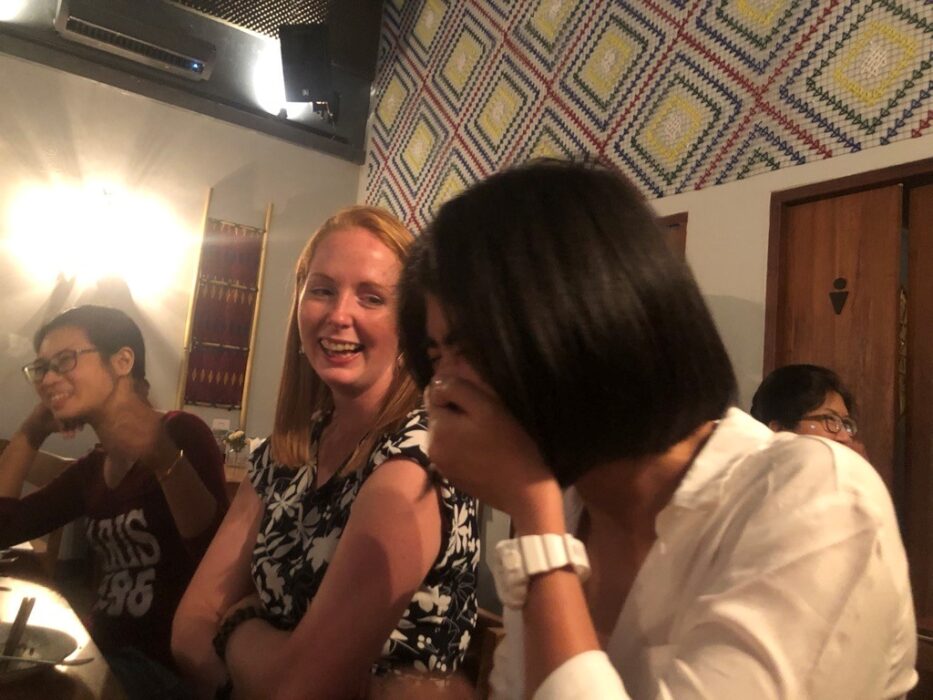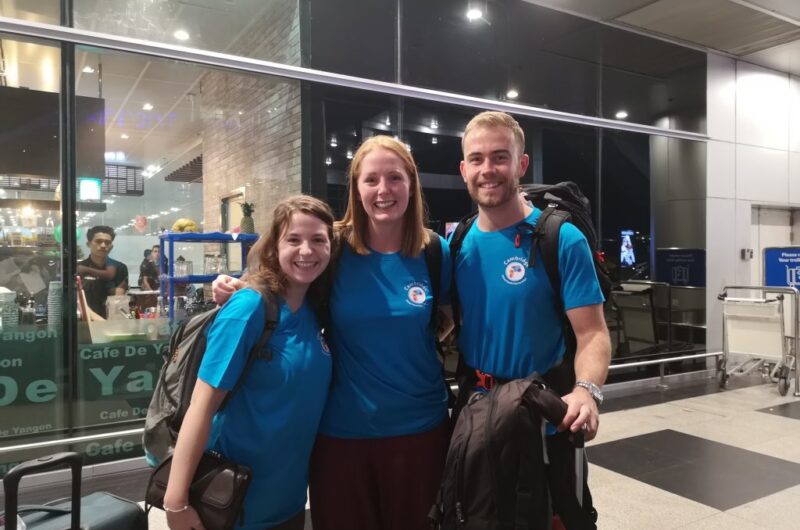3RD FEBRUARY 2020
By Robyn Winters
Sam and Caroline’s last weekend was a grand success. There was a meeting with all the available physios and the head of the department, Prof Khin, to thank them and say goodbye. I was so proud of their little farewell speeches, and was even asked to give one myself, which was very kind.
Below Sam and Caroline are with the heads of the department before being presented with some thank you gifts. They achieved an incredible amount whilst In Yangon, as well as forging some wonderful relationships. They will be missed by all.

The very first time we came to the hospital, it was some of these same physios who had found us standing awkwardly outside the main entrance hoping to be noticed. Our first experience with this department was in some of these same rooms, drinking from the same teacups. It all seems so very different, but we know the rooms are the same, so the change must have been in us.


They got off safely the next day and were happy to have a little more buffer room to recover from jetlag and the emotional reverberations of everything that has happened over the last 3 months.
And that leaves me! I am still well supported by the whole Cambridge team, as well as my colleagues from work, friends at my church, and some expats here with the Improving Global Health (IGH) group. I’m also lucky to be working with interpreters every day for my research project at the hospital, meaning I have daily conversations in English and feel much less isolated. I keep busy with interviews and like to think my interviewing skills are improving.
One of the hardest parts is managing my own bias. I’m wanting to explore the average family’s perception of the healthcare for the patient with a traumatic brain injury, but often find myself trying to diagnose what’s going on based on their answers or attempting to problem solve in the situation rather than just listening to their stories. I have to keep reminding myself to ask questions based on what it seems that they want to say, rather than what I think I’m trying to find out (within extremes, of course). After interviewing the families, I go to the unit and do a brief assessment of the patient. This allows comparison between what the clinicians here see (as recorded in the chart), what the families see (per the interviews), and what I see in my exam.

This week I was struck by the contrast between the inside and outside of the hospital. Everyday walking in, I pass this gorgeous riot of bougainvillea coming over the wall. People are always stopping to have their picture taken with the flowers, making it an invisible obstacle course for pedestrians trying to pass by without ‘photobombing’.

Inside the hospital, on just the other side of that wall, the story is different. Vines are climbing in through the glassless windows, clothing of patients and family members is hung out to dry on makeshift laundry lines. A forgotten wheelchair sits, waiting to be swept into action.
This is becoming a common theme during my time here – the extremes of poverty and beauty so closely juxtaposed, and the inevitable areas in which they overlap. On the neurosurgical wards I see much suffering, but at the same time I’ve never seen such outpourings of tireless compassion from the friends and families at patient’s bedsides. It’s tragic and beautiful, all mixed up together.
Return to blogs

